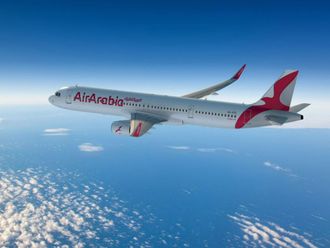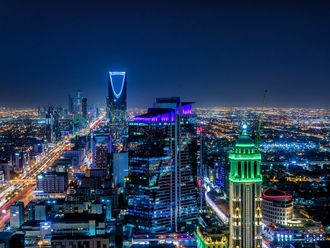Dubai: Lean times in the television industry of late have placed great emphasis on television channels landing higher viewership in Ramadan.
More viewers converts into a better bottom line both for channel owners and the advertisers who choose to promote their products during the busiest television time of the year in the Middle East, experts say.
Sami Raffoul, general manager of the Pan Arab Research Centre (Parc), in Dubai said timing and content are critical for a tele-vision channel to not just survive but also thrive in tighter financial straits.
"Ramadan is very special because they usually line up the best harvest they can find in terms of series," Raffoul told Gulf News. "Like in the West during Christmas, television stations put up good programming. It's the exact same here."
Early start
Television companies in the Middle East procure TV shows early in the year at high prices which are launched during Ramadan when television channels charge higher rates for advertisements to recoup investment. It's a make, or break time for television entities that need to secure a stable viewer audience to keep advertising spend flowing through the doors.
"If a station manages to maintain or increase its viewership during Ramadan, it's likely there will be a carrying forward for a few months, an upswing in revenue," said Raffoul. "If a station does not perform well during Ramadan, it is likely to have surrendered some of its audience to another station. It can take three to six months to recover what has been lost."
Karim Shahmy, Managing Director of Tonic Media, said increasing advertising rates during Ramadan is warranted given the spike in television viewers by holiday adherents.
"Ramadan has a special nature. TV and food is a big part of it. It's essentially split between praying, eating and watching TV. Watching TV is concentrated only after Iftar and ending of fast. It's a small window [of time]."
Shahmy said the timing of when shows are aired is of absolute critical important for the channel and for the advertiser who is looking to reach as many customers as possible.
"Ramadan is a time for TV stations to export themselves to new viewers," he said. It really is a critical month for revenue and incremental viewership," he said.
Test of success
Shahmy said his strategy is to actually wait until the first two weeks of Ramadan have passed and Ipsos TV polls are released to see which shows have become instant hits are within a short period already being followed by millions of viewers in the Middle East.
"Most sponsorships are sold early," Shahmy said, "but you can go for spot-buys, 30-second ads later on."
The best method for determining which shows are hot and not, however, is still word of mouth from friends and family, Shahmy said.
Shaharyar Umar, Product Manager with Pan Arab Research Centre (Parc), said there is no better time of year than Ramadan to reach potential new consumers over the TV airwaves.
"It has been observed that consumption habits change significantly during Ramadan in the region with flexible working hours and people utilise it for socialising and spending more time with family," he said.
Bigger budgets
Latest figures tracked by Parc suggest television advertising will be increased in the coming weeks compared to recent times amid global financial woes.
Business year 2009 "was a disappointment to many TV media owners even though the ad spending on television media in the region increased by 17 per cent in Ramadan 2009 compared to Ramadan 2008. However the growth was not uniform with a number of advertisers focusing on mainstream media and Pan Arab Media to gain a better reach in more markets," Umar said.
"Advertisers only spent around 16 per cent of their television budget for a year during Ramadan'09. Advertisers have a better clear picture of Ramadan in 2010 and it is quite likely that Ramadan will lead to a pragmatic growth in advertising spending in the region," he said.
Higher advertising revenues usually stem from a large viewership attained during Ramadan via popular television shows subscribed to by different channels.
Umar said that "some of the past trends indicate that television media that performs well during Ramadan carries their ratings earned for months to come. Perhaps some channels buy or procure the best programmes and broadcast them during Ramadan and repeat them after Ramadan."
Content is also changing during Ramadan, Umar said, with a richer palette of programmes and timings offered to viewers.
"A paradigm shift is also observed in the genres viewed during the month of Ramadan. Shorter duration programmes like serials/dramas, sitcoms, soap operas available in general comprehensive channels and religious programmes are in high demand during the period. The viewership of movie channels, music channels, sports etc fares badly during the month. Even news programmes are slightly affected adversely during the period," Umar said.
Outlook
Data from the Pan Arab Research Centre (Parc) suggest that the "region is poised to return to growth momentum in ad spending for 2010 as the region's ad spending is measured at $6 billion [Dh22 billion] in the first half of 2010, a growth of 21 per cent — compared with the first two quarters of 2009," said Shaharyar Umar, product manager with Parc.
Increased spending is levelling off at higher levels, Umar said.
"Ad spend in UAE showed signs of stability as the heavy fluctuations observed in 2009 subsided to a variability uneven growth. Even as the ad spend in UAE witnessed a contained decline of four per cent in first half of 2009 as compared to last year for the same period, the trend is that the ad spending has started picking up over the period with the month of June showing a positive growth unlike January when it reported a double digit decline."
The UAE, meanwhile, has dropped from first place as the largest ad spender in the region.
"Egypt has replaced the UAE, registering growth of 36 per cent over the last half year," said Umar.












